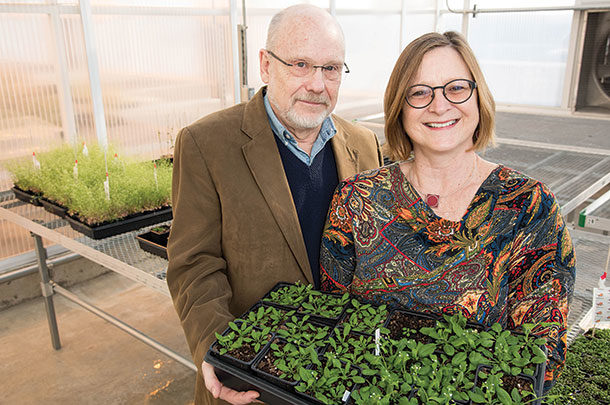Scientific data from a recently released study on how plants respond to the presence of insects demonstrated that plants recognize different insect species – such as different varieties of caterpillars – and respond in unique ways to each of them.
The study, by University of Missouri’s Dr. Heidi Appel and Dr. Jack Schultz, was funded by the National Science Foundation and published in the journal Frontiers in Plant Science.
In the study, microscope slides printed with plant genes were used to tell whether the amounts of fluorescently labeled genes from leaves were changed by the insects. These genetic responses were very specific to the insect and increased many of the defense responses plants have to insects.
But insect attack also influenced genes involved in root growth, water use and other ecologically significant processes monitored and controlled by individual plants.
Most of plant defense is chemical and familiar to humans as the flavors and medicinal properties of herbs and spices and natural medicines. Humans can use the spices and herbs because they’re consuming them in small amounts.
“Compared to insects, we eat these compounds in small amounts,” Appel says. “Insects can consume enough of them in a meal to be toxic or repellent.”
Volatiles, such as the smell of newly mown hay, are also part of plant defense responses during insect or other types of attack. The odor sends signals to natural predators of insect herbivores indicating there are opportunities to find a meal on the plant.
Nearby plants that have been undamaged also detect volatiles and respond by priming – getting ready for – or implementing their own defenses.
So how do plants tell insects apart? Researchers have learned caterpillars drool as they eat. This combination of saliva and stomach contents may play a role in a plant’s ability to distinguish between different insect varieties, so may the pattern of insect feeding. Appel has also recently demonstrated that plants respond to the vibrations caused by insect feeding (Click here to read Plants respond to caterpillar chewing vibrations).
Appel and Schultz used a small flowering plant in the brassica family called Arabidopsis thaliana (A. thaliana), which is well-suited to this type of research because the plant’s genomes have been sequenced so scientists can evaluate its genetic response to environmental factors.
With the plant’s approximate six-week life cycle, studies can be conducted and evaluated in a relatively short time.
“This plant is widely studied by researchers in academia, government and industry settings,” Appel says. “It provides a model system for the plant world, similar to the way rats and mice serve as good models for studies related to human health. Because brassicas like kale, broccoli and rapeseed are important crops, what we learned about A. thaliana’s responses to insect attack can help plant breeders develop insect resistance in other brassicas.”
Other scientists are examining underground plant responses to environmental stimuli such as insects. Plant roots are known to mediate underground communication between plants.
Theoretically, findings from this study of plant responses to insect presence could allow development of new precision agriculture tools to combat insect infestation. There’s potential for precision tools that identify plants in defense mode so spot treatment can be applied.
“That kind of precision ag tool is still a concept,” Appel says. “But it’s possible to have sensors on the front of a tractor that could detect insect damage and equipment on the back of the tractor that could apply the appropriate treatment.
“What surprised us in this study is that plants were clearly able to tell insects apart; they know who’s attacking,” Appel says. “Plant breeders now know they have to take each insect into account when they develop insect-resistant plants. This is an interesting new frontier in plant biology, how to deal with multiple stressors and giving plants the ability to fend off not just one attacker but many.” FG
Loretta Sorensen is a freelancer based in South Dakota.
PHOTO: Jack Schultz, director of the Bond Life Sciences Center at University of Missouri, and Heidi Appel, senior research scientist in the Division of Plant Sciences at the University of Missouri, research plant response to insect attack. Photos courtesy of Roger Meissen, Bond Life Sciences Center.








